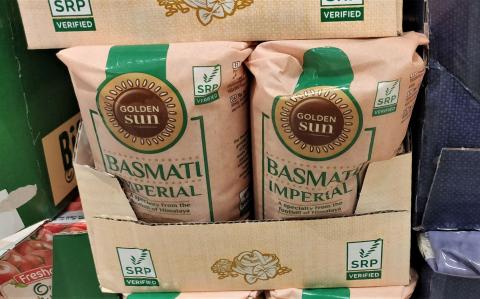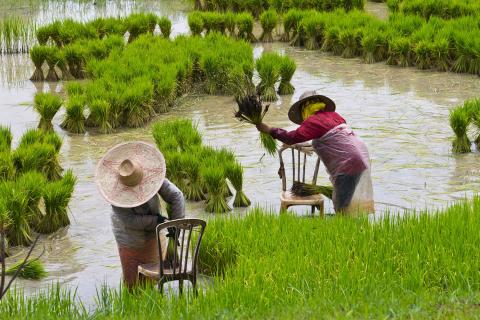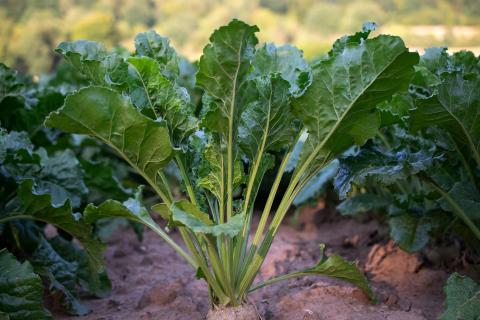Rainforest Alliance: Still room for ‘small adjustments’ in new certification system
The Rainforest Alliance (RA) recently launched far reaching changes affecting millions of producers and buyers around the globe. While the nonprofit promises the revised standard will help certificate holders produce “better crops, adapt to climate change, increase their productivity, and reduce costs”, the changes are currently receiving strong pushbacks in countries such as Ecuador, Guatemala and Sri Lanka. We invited Conrado Guinea Díaz, RA Senior Manager for Global Assurance, to answer some of the most pressing questions.
You have introduced considerable changes to the RA standard. Please describe briefly what they are and why they are necessary.
“Our certification program started in the early 1990s and has proven to be a very effective tool to drive improvements at farms. Some years ago, we began to realize that the system had some challenges and limitations that we needed to address. For instance, we didn’t have a way to properly measure the impact of the certification, and in some cases, auditors were being perceived as policemen by the farmers. This was of course never the intention. So, we decided to reimagine the certification system.“
How are you communicating the new system to the market?
“We already began communicating our intentions to the market players before we started developing the new system. They were very happy and welcoming about these intentions. During the development of the standard and the assurance systems, we also engaged with different market players for consultation in line with ISEAL requirements and to check if we were going in the right direction.”
Did you carry out any market testing before the launch?
“Yes, but unfortunately it hasn’t been as extensive as we were hoping for. We planned to carry out field testing, but unfortunately this did not happen due to travel restrictions. Instead we made mock-up audits to check if the changes made sense. The first version we have published is not set in stone and we will publish a 1.1 version early next year.”
Buyers will have to pay a royalty as part of your new Shared Responsibility-policy. How do you think they are going to react to this?
“Broadly the market understands and welcomes the emphasis on Shared Responsibility. There are some questions in implementation and this is why the time between now and December is key to get input on the manner, in which this can work. Making the entire supply chain accountable for Shared Responsibility is key to making this work - from brand owners to first buyers.”
For a certified farmer, what will be the main changes?
“Farmers that are already certified will have to make an extra effort. We have tried to ensure that this extra effort is not too huge, so that by only making a few adjustments farmers that are already certified will be able to maintain certification. They will have to do a more thorough risk assessment and the registration phase will be a little bit more extensive. However, it is not super complicated. So, even if they will have to invest a few more resources initially, in the long run it will pay off and even give them some savings.”
Are you not worried that you will lose some of the smaller farms, which are unable to pay the additional investment?
“No, we are not trying to create a system exclusively for the larger producers. On the contrary I believe the new system will become even more accessible. When designing the new system, we were very careful that it should not increase the costs significantly, both the implementation cost and the audit cost. The first audit might be a little bit more expensive, because it is more thorough and has more checks, and the certificate holder will have to gather more information and basic analysis, so it can become a little bit more time consume, which will of course translate into higher cost, but overall I don’t think they will be significantly higher.”
You have received a strong push back on the new standard from some of the current certificate holders, for instance a group of banana producers in Ecuador and tea producers in Sri Lanka.
“Yes, we are aware of this and of course this is concerning. It is not the first time it happens, however. Every time you make a change to a certification system, people react. We always take this very seriously and in case of the banana producers I know there are engagements with them at all levels to try and find a solution. Many of these situations are the result of some of the certificate holders or sectors not understanding properly the new requirements or us not communicating it right. Fortunately, there are still room for small adjustments and improvements without compromising our mission.”
Will there be any changes to your approach on major issues such as child labour and deforestation?
“We do not expect any changes to the key topics that are already defined in the standard. We already have one approach for deforestation and another approach for child labour. We are going to stick to those. In the case of child labour, for instance, we have had a zero tolerance approach, which has worked fine to some extent, but with the new standard we are moving to an access and address approach, which is even stronger, because it is going to prioritize preventive actions in the best interest of the children rather than penalties. With the new approach, we expect that people will cooperate more to prevent these cases from happening instead of just trying to hide them.”
RA was originally part of a network of organisations based in developing countries. Today the standard is designed in New York and Amsterdam. Is this a problem?
“I was part of the original network of organisations behind RA and I can say quite confidently say that this is not the case. Something that made us very proud at the time, was precisely that this program was developed in the South and by the South. Right now, even if the HQ’s are based in Amsterdam and New York, the decisions are not. There is no exclusive small group of people based in the headquarters taking all decisions. All of us who are based in the producing countries are aware that this is something that should reflect the reality in the field. Everyone has been involved in the discussions.”
You initially planned to introduce an allocation and scoring system for CB's. What is the current status on this?
“We currently have a pilot project in the cocoa sector in West Africa, where we are allocating certificate holders to CB’s based on a performance system. This is not going to be approach for the rest of the globe, at least not at the moment. For the rest of the world we have developed a set of rules, which will be audited by a third party. This will not be based on the pilot in West Africa. Based on the outcome of the pilot, we may decide to switch to this, however.“
Will certificate holders still be able to choose which CB's to use?
“Yes, certificate holders will still have a whole menu of CB’s to choose from and in most countries there will be four to five CB’s. We noticed that the quality dropped as a result of having numerous CB’s in each country. It basically became a race to the bottom, because certificate holders started to hire the cheaper CB’s. If CB’s can carry out the same quality assurance at a lower price, it is of course fine, but we began to experience CB’s cutting corners. “



